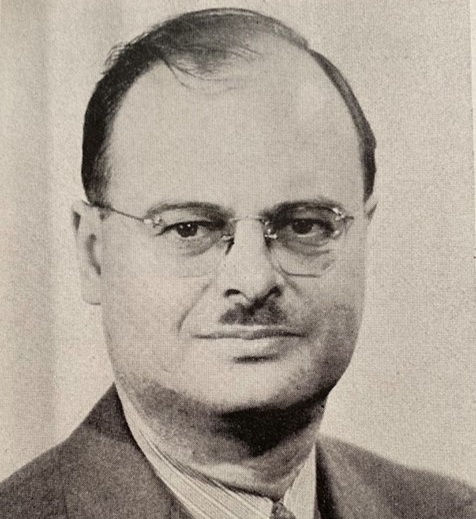
“He became convinced that the professionalization of individual managers required also some method of Accrediting the organizations with which they might be associated. From the authorship of this ide to its fruition was a long and difficult road. Undaunted by several setbacks Mr. Cady’s persistence and the wisdom of his plan finally won through to Institute adoption.”
The Journal of Property Management on Kendall Cady, CPM®
Summer 1946
“The Institute is able to recognize certain organizations which meet its requirements and to grant those organizations public recognition as Accredited Management Organizations. . . This is a service to property owners and has no other objective. . . . It should be the aim of the Institute to qualify every worthy management organization in the United States so that the initials AMO may take their place among the respected and effective MAI, CPA, accredited Hospitality, and the many other marks of merit and distinction.”
H. Walter Graves, “The Editor’s Review,” The Journal of Property Management
Summer 1948
“For a moment I would like to talk with you about the Institute of Real Estate Management. Now in its seventeenth year, it has passed through infancy and puberty and is approaching adulthood. It is strong and virtle – active – doing things. It is big and growing bigger. Today we have almost 1100 CPMs in 41 states. There are approximately 300 Accredited Management Organizations operating in more than 130 principal cities, controlling hundreds of millions of dollars’ worth of real property within the Standards of Practice of the Institute. AMO applications are coming in from the biggest and best-known firms in the country, and the roster is beginning to read like the Blue Book of the business.”
Ormonde A. Kieb, CPM®, 1951 IREM President, The Journal of Property Management
Summer 1951
“It was Kendall Cady of Chicago who finally came up with a device upon which a compromise could be reached – the Accredited Management Organization. Taking a leaf from the medical profession, Ken found that hospitals in which surgeons practiced were rated by these surgeons as to their equipment, their professional management, and their general standing. What was to prevent CPMs from issuing such rations for the property management firms of the nation?”
James C. Downs, Jr., CPM®
The Journal of Property Management, Fall 1954
“There are many advantages in being an Accredited Management Organization. . . But whatever else, let’s keep in mind that “What it Means to be an AMO” is more than just a slogan to be considered and analyzed from time to time. To those who are conscientiously carrying out their daily tasks, the AMO becomes a whole new way of life.”
A.T. Beckwith, CPM® introduction to an article entitled “What It Means to be an AMO”
The Journal of Property Management, Fall 1956
“As IREM serves its members and the general field of property management, so the members of IREM, the CPMs, seek to serve the public in many ways. One very obvious method is the Accredited Management Organization.
Much as doctors certify the quality of a hospital and its facilities, staff, and procedures, the AMO firms is qualified initially through the retention of a CPM as the head of its management activities. This qualification, along with the prohibition of commingle funds, property employee bonding, and other restrictions designed to protect the client given a extra measure of security to the public when seeking a management firm.”
Douglas J. McDonough, “Professional Management: A Sound Investment”
The Journal of Property Management, November/December 1971
“One of the greatest needs we have today is an accurate system of identification of organizations capable of solving complex real estate problems. Hopefully [with the updates planned for 1975], the AMO designation will have the substance necessary to assist in this role.”
Vance C. Miller, CPM®, 1974 President, “The President’s Letter”
Journal of Property Management, November/December 1974